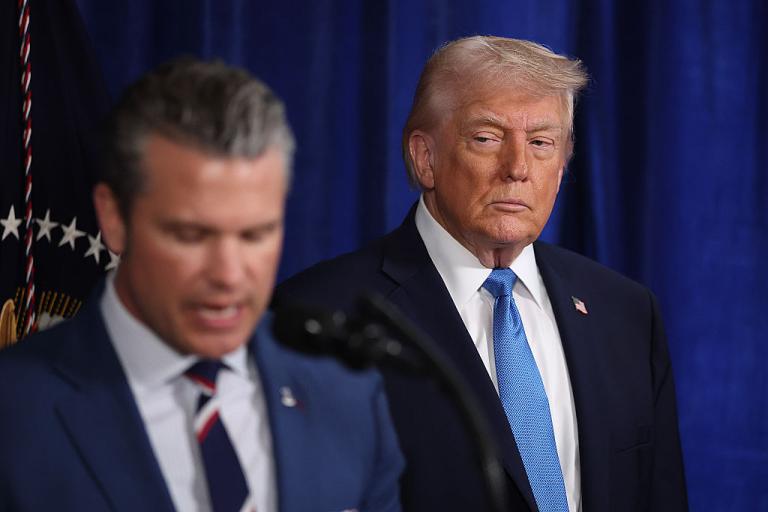Our electronic devices take a serious environmental toll, and one of the best ways to mitigate that is to use them for as long as possible before replacing them. But it’s hard to know how long a new gadget will last if you’re unsure how easy it will be to fix. Now, companies are going to have to start coming clean about that — in France, at least.
In a world first move last month, France began requiring makers of certain electronic devices, including smartphones and laptops, to tell consumers how repairable their products are. Manufacturers selling these devices in France must give their products a score, or “repairability index,” based on a range of criteria including how easy it is to take the product apart and the availability of spare parts and technical documents. While France won’t be enforcing use of the index with fines until next year, some companies have already begun releasing scores for their products.
The repairability index represents part of France’s effort to combat planned obsolescence, the intentional creation of products with a finite lifespan that need to be replaced frequently, and transition to a more circular economy where waste is minimized. But it also has global implications. Repair advocates say that the index will serve as a litmus test for other nations weighing similar regulations, help consumers make better choices, and hopefully incentivize companies to manufacture more repairable devices.
“It’s a big step in the right direction,” said Ugo Vallauri, the co-founder of Restart Project, a London-based repair advocacy organization and member of the European Right to Repair Campaign.
In recent years, electronics of all shapes and sizes have become more difficult to fix due to a combination of design choices and software locks that often require proprietary manufacturer tools to get past. The cost and complexity of repair means that many consumers don’t even try to fix old electronics, instead discarding them for new ones that take additional energy and resources to produce. In 2020, the French government estimates that only 40 percent of broken electronic devices in the country were repaired.
To boost that percentage higher, France passed an anti-waste bill last year mandating that electronics manufacturers make a repairability index visible on their products. The index, which initially applies to smartphones, laptops, TVs, washing machines, and lawnmowers, is presented as a score out of 10, with a higher number indicating a more repairable device.
Ministère de la Transition écologique
Manufacturers grade their products using worksheets that integrate five criteria: availability of technical documents to aid in repair, ease of disassembly, availability of spare parts, price of spare parts, and a wild-card category for repair issues specific to that class of products. All of the information that went into calculating the index must also be made available to consumers at the time of purchase.
Eventually, France intends to expand the score to other classes of consumer products. By 2024, the repair index will transition to a “durability index” that not only tells customers how repairable a product is but also describes its overall robustness.
While the repairability index became an official requirement on January 1, many manufacturers are slow-walking its implementation, according to Vallauri. “There wasn’t really enough time to enforce it in early 2021,” Vallauri said, explaining that some of the scoring criteria were only agreed on toward the end of last year.
But a trickle of scores are starting to emerge. The French spare parts business Spareka is publishing repairability indices as it receives them from manufacturers, and so far, its website includes scores for Asko washing machines, Samsung TVs, OnePlus smartphones, and more.
The scoring system has its limitations. Vallauri explained that the indexes were developed through an intensive stakeholder process that involved input from manufacturers as well as consumer advocacy organizations. Ultimately, this led to some compromises. For instance, as Adèle Chasson of the French repair advocacy organization Stop Planned Obsolescence noted in a blog post, laptop and smartphone makers can get a “free point” by providing consumers with information about different types of software updates, such as security updates or system upgrades — information that may not have anything to do with how fixable the device is.
Perhaps more concerningly, manufacturers are going to be self-reporting their scores, and it is unclear whether there will be rigorous governmental oversight to ensure all the math is being done correctly.
“Certainly we have seen manufacturers abuse this kind of scoring system in the past,” said Kyle Wiens, CEO of the repair site iFixit, which helped advise the French government on the development of the index. (In fact, France’s index took inspiration from the repairability scores iFixit has been assigning products for years.) But Wiens also suspects that competition will help keep greenwashing in check: Apple, for instance, could call out Samsung if its competitor comes out with a dubiously high repairability index for a flagship smartphone.
“Any time you have something like this, you’ll see competitors pushing back on each other,” Wiens said.
Repair advocates across Europe are watching the rollout of the French index closely in the hopes that it will soon be spread beyond France’s borders. In November, the European Parliament voted in favor of developing laws that mandate E.U.-wide repairability labeling. Vallauri said that the E.U. is still “probably a few years away” from repairability scores appearing at every shop in every member country, but that draft legislation is expected to emerge this year. The fact that France chose to go first with its own score, he said, “shows that it’s possible” and represents “a good learning opportunity for other countries that can now build on what the French lawmakers created.”
The repair community is equally interested in seeing how the French scoring system impacts both consumers and manufacturers.
In September, the French government published the results of a study that looked at how 140,000 online shoppers responded to a beta version of the repairability index that included all of the final criteria except for price of spare parts. It found that customers tended to avoid purchasing laptops with a repair index compared with laptops lacking one. Project manager Laurianne Vagharchakian, a behavioral sciences researcher with the French government, attributes this to the fact that study’s average repairability index, at 5.4 out of 10, was probably “not very motivating and attractive” to potential buyers. Other research suggests that consumers prefer products with labels indicating a longer lifespan over competing, shorter-lived products, and that in some cases, they may be willing to pay much more for the more durable product.
If repair scores start influencing consumer behavior across France as these findings suggest they will, manufacturers are likely to feel pressure to make devices easier to fix. Both Vallauri and Wiens highlighted the importance of the French repair scores being mandatory for potentially forcing a sea change in how products are made.
“We think that the moment something becomes a requirement, it’s no longer really a problem for a manufacturer,” said Vallauri. “They just have to deal with it as one of their variables in bringing a product to the market. So the more some manufacturers choose to make products more repairable, it will motivate others, if nothing else for fear of missing out, to improve their practices.”
This story has been updated to clarify that the Restart Project is a member of the European Right to Repair Campaign.




